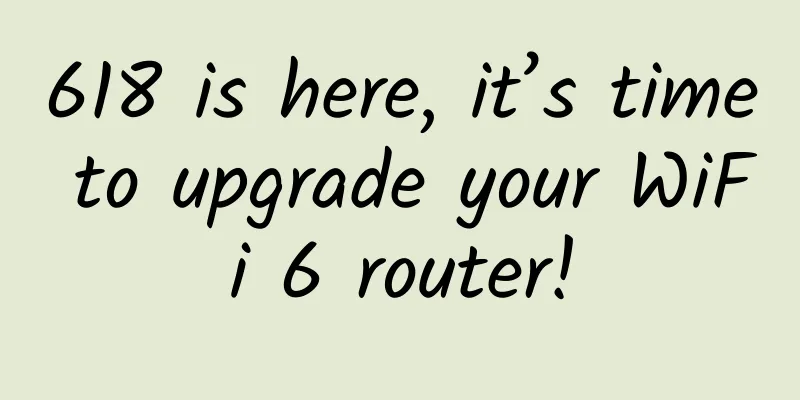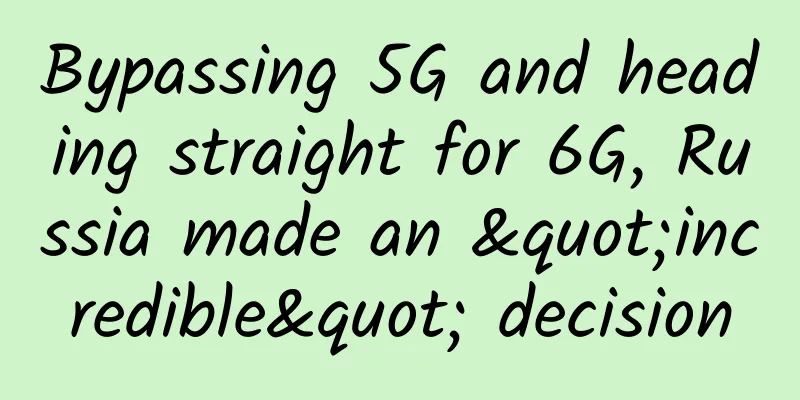618 is here, it’s time to upgrade your WiFi 6 router!

|
618 is here, and during the annual shopping festival, various wireless routers are available at good prices. During this period, upgrading the original router at home to a WiFi 6 router has become a good choice. However, many friends still don’t understand how WiFi 6 is better than the current WiFi 5? And why should I upgrade to a WiFi 6 router? First, let's take a look at the characteristics of WiFi 6. Compared with the most popular WiFi 5, WiFi 6 is faster, supports more concurrent devices, has lower latency, and lower power consumption. WiFi 6 uses the OFDMA technology that is the same as 5G, combined with 1024-QAM high-order modulation, which can support a maximum bandwidth of 160MHz, which is nearly three times faster than WiFi 5. Intelligent frequency division technology can support more devices concurrently and increase the access device capacity by 4 times. Multiple concurrent access devices can reduce queuing, actively avoid interference coloring, and reduce latency by two-thirds. When the terminal device is on standby, it supports on-demand wake-up function, which reduces terminal power consumption by 30%. We can compare the scenario of router-to-device transmission to a fleet. Under the Wi-Fi i5 standard, a fleet can only deliver to one customer at the same time. Even if there are empty cars, they will be dispatched as usual. If a car breaks down (is interfered with), the entire fleet cannot be dispatched. Under the WiFi 6 standard, a fleet that departs at the same time can form a small team of at least 26 adjacent cars. Each team can deliver to different customers. If a car breaks down (is interfered with), it only affects the team it is in. When we are at home, we often find our neighbors' WiFi signals, which can interfere with our own WiFi transmissions. The interference coloring technology used by WiFi 6 can mark neighboring network signal frames that pass through walls, allowing the user's router to ignore them. The WiFi signals between neighbors can transmit data simultaneously on the same channel without interfering with each other, reducing the interference rate by 30%. The power consumption of WiFi 6 and WiFi 5 is very different. WiFi 6 will negotiate with the terminal on the WiFi wake-up time to wake up on demand, and no power is consumed during other sleep time. WiFi 5 can only communicate with one device at a time, and all terminals connected to the same route are either in transmission state or in waiting state, and they are disorderly, and the waiting state still consumes power. It can be seen that WiFi 6 surpasses WiFi 5 in all aspects. Currently, laptops, smartphones, tablets and other products launched in the second half of 2019 are all equipped with WiFi 6 wireless network cards. If users upgrade their home routers to WiFi 6 routers, they can enjoy a faster WiFi Internet experience. Therefore, it is still necessary to replace the WiFi 6 router. However, if there is no WiFi 6 terminal at home, it is not necessary to upgrade the WiFi 6 router. |
<<: 5G acceleration and VR mobility: what changes will digital audio-visual content undergo?
>>: Four factors driving 100Gbps network upgrades
Recommend
How to improve WiFi quality without increasing budget? 6 tips to improve enterprise LAN WiFi performance
Assuming your company has no funds for upgrading ...
HostDare: Los Angeles VPS 60% off + double memory + double bandwidth starting at $10.4/year - 1.5GB/10GB/1TB@200Mbps
HostDare has updated its VPS discount information...
Introduction to the complete 5G system
5G will soon be here, and it will be more than ju...
Why do mobile network testers still pursue speed at all costs?
Communications operators must refocus on covering...
Application of 5G IoT in Commercial Buildings
The long-awaited 5G technology is finally here. I...
Aruba Launches ArubaESP, the Industry’s First Cloud-Native Platform for the Intelligent Edge
Aruba, a Hewlett Packard Enterprise company, today...
DMIT: Hong Kong CN2 GIA/Japan CN2 GIA line large bandwidth annual payment starting from US$199
DMIT.io has launched this year's summer promo...
Is the WiFi6 network upgrade in your new or old home so great?
At the beginning of the new year, many friends be...
How will 5G change the world?
5G is the latest mobile network technology that o...
TCP has already implemented KeepAlive, why does the application layer need to implement it again?
TCP Heartbeat TCP Keepalive is a mechanism used t...
WiFi, Bluetooth, NFC, three major technologies covered in one article!
Wi-Fi, Bluetooth, NFC, I believe everyone is fami...
What does the interviewer want to test us about the three-way handshake and the four-way wave?
In an interview, three handshakes and four waves ...
Three major operators: 5G package user penetration rate will exceed 60% in 2022
On March 13, China Telecom Corporation Limited an...
Huawei Releases Next-Generation Intelligent Storage OceanStor Dorado V6 to Build a New Data Infrastructure
[51CTO.com original article] [Beijing, China, Jul...









